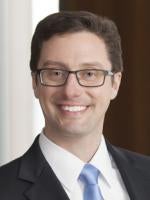The Federal Circuit recently handed down an informative decision in American National v. Sleep Number Corporation affirming the Patent Trial and Appeal Board’s final decisions in two inter partes reviews finding some claims patentable and some claims not patentable. The claims at issue related to the systems and methods for adjusting pressure in an air mattress in less time and with greater accuracy than the prior art.
The decision addresses and gives guidance on a range of issues presented by both parties — including findings of obviousness and the allocation of the burden of persuasion, the ability to amend claims in the context of an IPR, and whether a claim satisfies the enablement requirement of 35 U.S.C. § 112 when there is an error in the specification.
This article unpacks these rulings and offers takeaways on the decision.
Overview of the Patents in Suit and Prior Art
American National filed petitions for inter partes review (IPR) of two of Sleep Number’s patents, namely the ’747 and ’154 patents, asserting that the challenged claims were obvious over the prior art. Prior art air bed systems have a control panel that allows a user to select a desired inflation setting for each air chamber, which allows for making changes to the firmness of the bed. The prior art included a patent owned by Sleep Number for an air bed system including a sealed valve enclosure assembly with an air pump for inflating and deflating air chambers to a desired pressure (Gifft), a patent describing a system for quickly reaching a desired air pressure in vehicle tires (Mittal), an automatic blood pressure cuff measuring a user’s blood pressure using a filter to prevent clogging the air exit valve (Pillsbury), and a method for measuring the pressure inside of an air bag while being filled or emptied (Ebel).
The patents in suit disclose adjusting pressure “in less time and with greater accuracy by measuring the air pressure inside the valve enclosure assembly instead of in the air chambers themselves, thus eliminating the need to turn off the pump in order to obtain a substantially accurate approximation of the chamber pressure.” Also, the patents disclose a process for the pressure adjustment factor being variable depending on whether the system is inflating or deflating the air chamber.
Summary of the Board Decision
American National argued before the Patent Trial and Appeal Board (“the Board”) that the challenged claims would have been obvious to the “ordinarily skilled artisan.” The Board reached split decisions on that score. First, with respect to the challenged independent claims and some of the dependent claims, the Board found that American National had proven they were unpatentable as obvious based on American National’s expert testimony that an ordinarily skilled artisan “would have understood that by ‘improving the accuracy of [Gifft’s] pressure adjust cycles on an ongoing basis, the number of pressure adjustments necessary to reach a target pressure could be reduced.’” Second, as to certain dependent claims requiring a “multiplicative pressure adjustment offset,” the Board found that American National had not demonstrated why a skilled artisan would have combined the prior art method of measuring pressure inside an air bag with other references, thus, these claims were not unpatentable as obvious.
In anticipation of just such a result, Sleep Number had filed motions to amend the claims that were contingent on a finding that the independent claims were unpatentable. The proposed amendments did not merely incorporate the “multiplicative pressure adjustment offset,” however. They also changed the claims to use language that Sleep Number characterized as consistent with “terms used in the industry and in related patents.” The Board rejected American National’s challenges to the non-substantive portion of the amendments.
Before reaching its findings of obviousness, the Board considered Sleep Number’s evidence of commercial success. That evidence consisted of sales by American National of products that Sleep National accused of infringement in a parallel district court proceeding. The Board found that the evidence did not show that the products “were commercially successful because of the merits of the claimed invention”–in other words, the Board found there was a lack of nexus between the claimed invention and the commercial success of the embodying products.
Federal Circuit Review of Board Rulings
The Court found there was substantial evidence to support the Board’s finding of both obviousness (of most of the challenged claims) and non-obviousness (of those dependent claims reciting a multiplicative pressure adjustment offset). The Court also affirmed the Board’s findings that Sleep Number’s evidence of commercial success had only “minimal probative weight.” In doing so, it brushed aside American National’s concerns that the Board accepted Sleep Number’s claim that the American National products accused of infringement fell within the scope of the challenged claims.
Regarding the Board’s decision to allow Sleep Number to present amended claims that responded to a ground of unpatentability, the Court agreed that the amendments were consistent with 37 C.F.R. 42.121. A prior Board decision had determined that this regulation “does not require…that every word added or removed from a claim in a motion to amend be solely for the purpose of overcoming an instituted ground” and that allowing amendments in this context “‘helps ensure a ‘just’ resolution of the proceedings and fairness to all parties.’” The Court here agreed, finding that “nothing in the America Invents Act (AIA) or the Board’s regulations precludes a patent owner from amending a claim to both overcome an instituted ground and correct other perceived issues in the claim.”
The Court also rejected American National’s argument that the Board should have denied the motion to amend because adding the term “valve enclosure” injected an inventorship issue into the patents as that term was used in the Gifft patent owned by Sleep Number. The Court agreed with the Board’s finding that valve enclosures were already well known in the art, and that using this terminology in the claims did not make Gifft an inventor.
Lastly, the Federal Circuit turned away American National’s enablement argument. The Court disagreed with American National’s argument that an error in the specification necessarily means that claims for the correct process are not enabled. The Court instead affirmed the Board’s finding that the error in the specification was a minor typographical error that a skilled artisan would be able to identify and still create the claimed invention.
Key Takeaways from the Federal Circuit Ruling
There are several lessons to be drawn from the Federal Circuit’s opinion.
One important takeaway is how the Court and Board addressed the issue of secondary considerations, in particular commercial success in the context of the patentability analysis. The Board entertained expert testimony proffered by the patent owner, Sleep Number, that the American National products fell within the claims of the ‘747 patents and noted that the testimony was not refuted by the petitioner. While the petitioner argued that it was inappropriate for it to consider this evidence in the context of an IPR, the Board made clear in its final ruling that it was not reaching an infringement decision. The Court agreed that the Board did not act inappropriately in considering this evidence while at the same time noting that it had “minimal probative weight.” It will remain to be seen how the Federal Circuit may react in a future decision if the Board were to find evidence of commercial success sufficient to overcome obviousness. Until there is further guidance on this score, if you are a petitioner in an IPR and the patent owner raises the commercial success of your accused products, it would be advisable to have your expert opine that any products accused of infringement do not meet the claims.
The Federal Circuit also agreed with the Board’s ruling on the scope of permissible amendments to claims in response to a ground of unpatentability. While amendments cannot enlarge the scope of claims, as long as they are in the form of a correction or made to harmonize claim language, they will likely be found permissible by the Board. Although it is still relatively rare for a patent owner to amend claims in an IPR, savvy practitioners should keep in mind that the amendment practice at the PTAB offers a way for a patent owner to fix § 112 and § 101 issues that could potentially cause problems in a district court litigation.
It is also noteworthy that the Court rejected the petitioners’ argument that the IPR-related amendments could render the patent at issue invalid on inventorship grounds. Indeed, where amended claim language is the same as used in prior art, it is highly unlikely that an inventor of such prior art would need to have been listed as an inventor. It is always possible, however, that claim amendments could introduce contributions from an unnamed inventor. Any challenges on this front are better made in district court, where the patent challenger can take advantage of much more robust discovery.
The Court’s decision also confirms that obvious errors in the patent specification will not run afoul of Section 112’s enablement requirement. While there is no hard and fast definition of what constitutes an obvious error, it is generally one that a skilled artisan would, when reviewing the patent, be able to ascertain from the context of the patent and still be able to re-create the patented invention.
In sum, this decision further underscores the challenge posed by IPRs to patent owners, who are often simultaneously suing IPR petitioners for infringement. With the PTO guidance memorandum issued in June, it may become harder to obtain discretionary denials under the Fintiv factors. Thus, it will be important for patent owners in the context of ongoing litigation to prepare for the possibility of an IPR filing and treat them as mini-trials.





 />i
/>i

